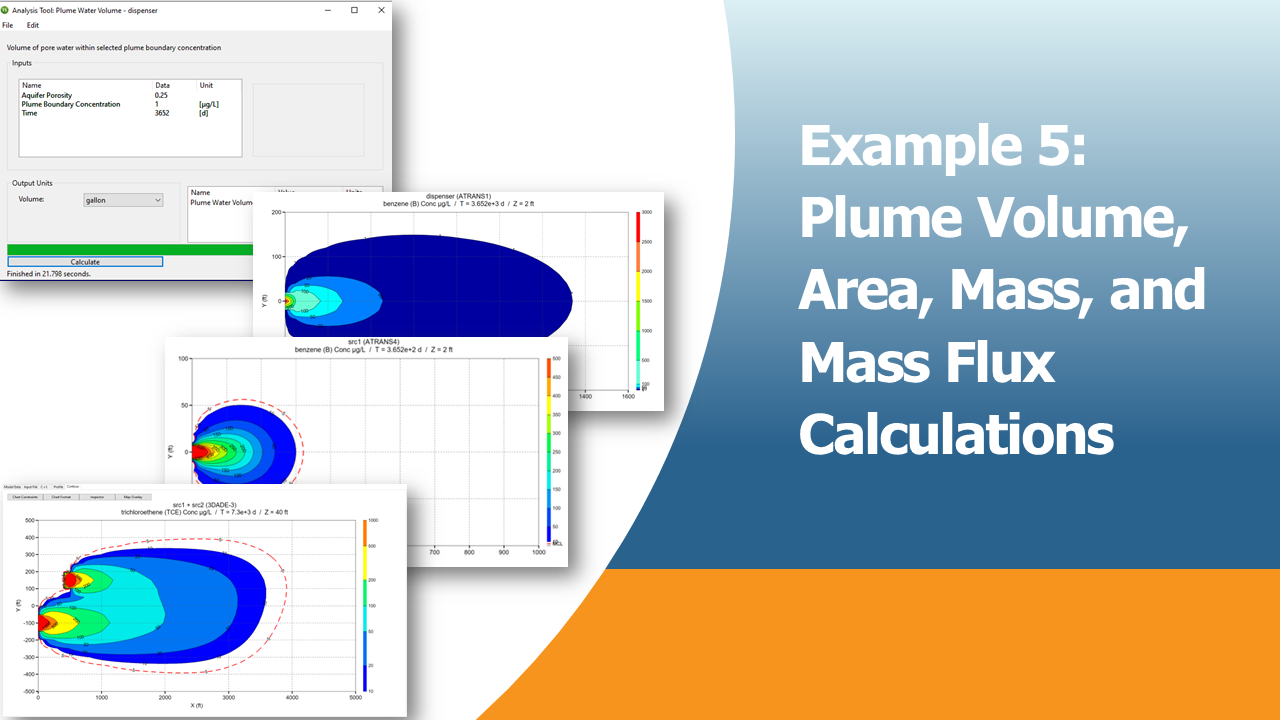TS-CHEM Example Application Series
The TS-CHEM Example Application Series was developed to provide a set of practical modeling application examples that can be achieved using TS-CHEM. The files provided below include a PowerPoint file with an overview of the example application as well as the associated model files used to analyze the scenario.
Example Application #1: Receptor Impact Evaluation
A chemical contaminant released to groundwater at a spill or disposal site can migrate in the direction of groundwater flow. Whether the contaminant travels far enough to reach a receptor (e.g. a public water supply well or sensitive ecological area) depends on a number of hydrogeologic and chemical fate and transport processes. In this example application, TS-CHEM is used to model the length of a benzene plume emanating from a gas station leak in order to determine if it will impact domestic wells at a nearby residential development.
Example Application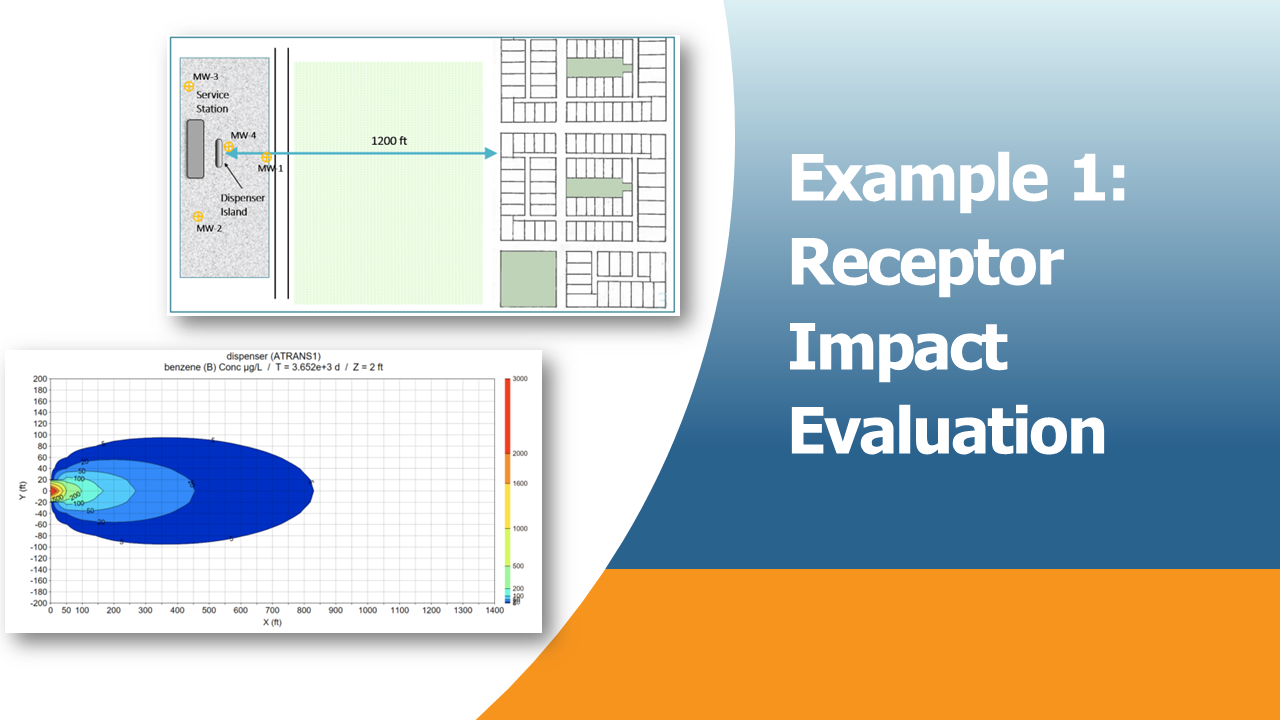
Example Application #2: Natural Source Flushing with MNA
Monitored Natural Attenuation (MNA) is a groundwater remediation option typically employed in environments where natural processes permanently degrade or destroy contaminants. This example demonstrates how TS-CHEM can be used to evaluate the growth and decay of a contaminant plume from a slowly flushing gasoline source in order to evaluate the potential impacts to receptors downgradient from the source area.
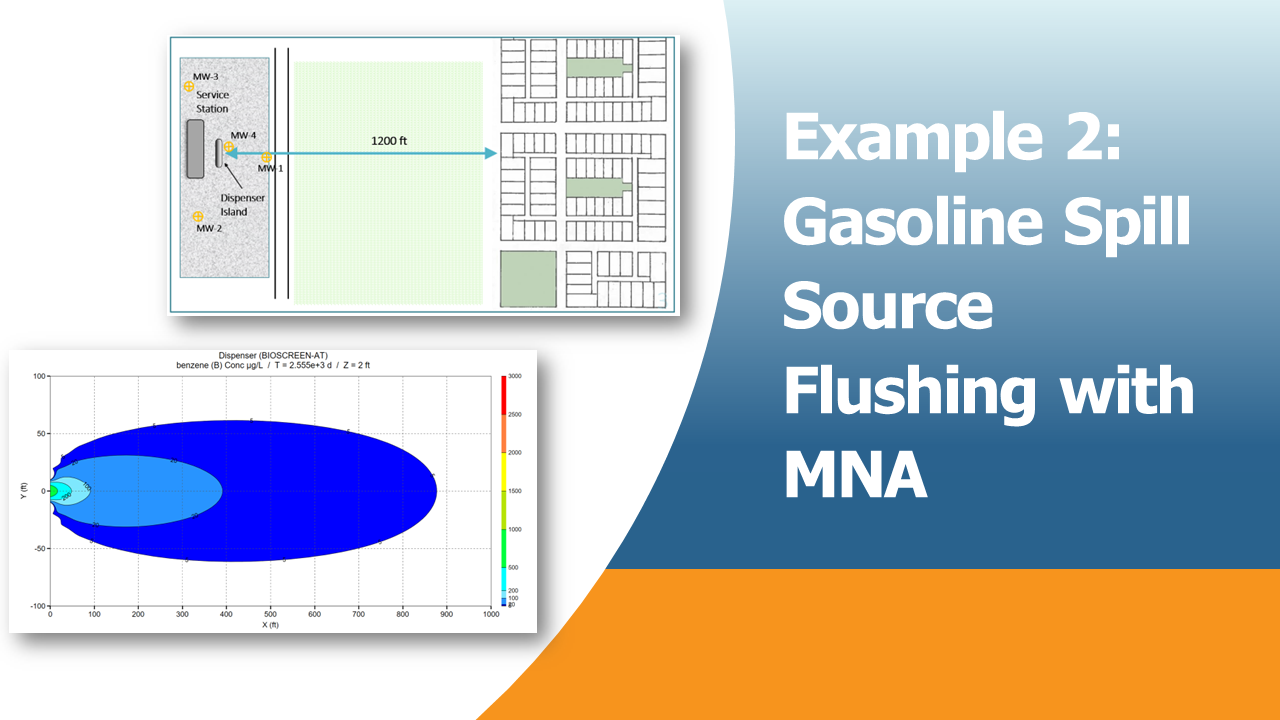
Example Application #3: Source Remediation with MNA
If a fate and transport analysis similar to the one described in Example Application 2 indicates that steps should be taken to control or eliminate the source, MNA may also be used in conjunction with source remediation options. In this example , TS-CHEM is used to show MNA as a viable remedial option to achieve a contaminant-specific regulatory standard following excavation of the contaminant source.
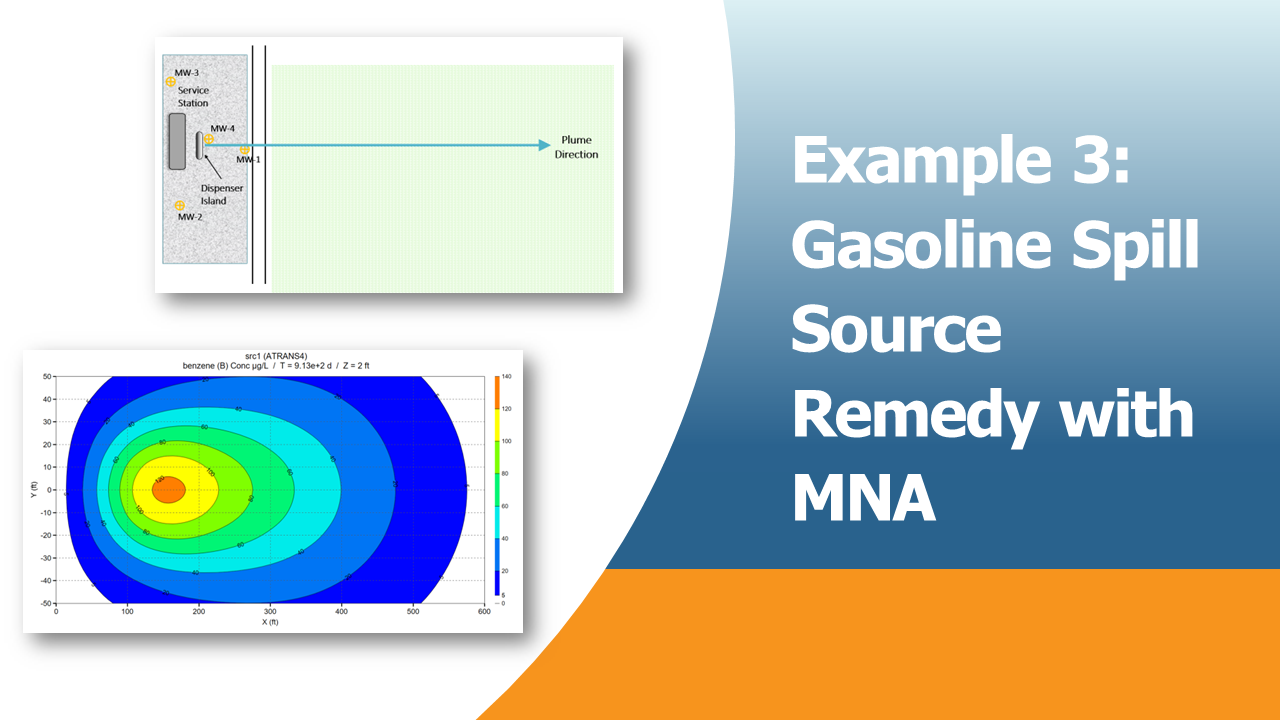
Example Application #4: Commingled Plume Analysis
TS-CHEM can even handle more complex scenarios including those in which two or more sources releasing the same chemical to groundwater can form contaminant plumes that coalesce to form one large commingled plume. In this example, two sources contribute to a large dissolved chlorinated solvent comingled plume. TS-CHEM is applied to evaluate possible impacts to downgradient receptors, and to examine the contribution from each source to the larger contamination problem.
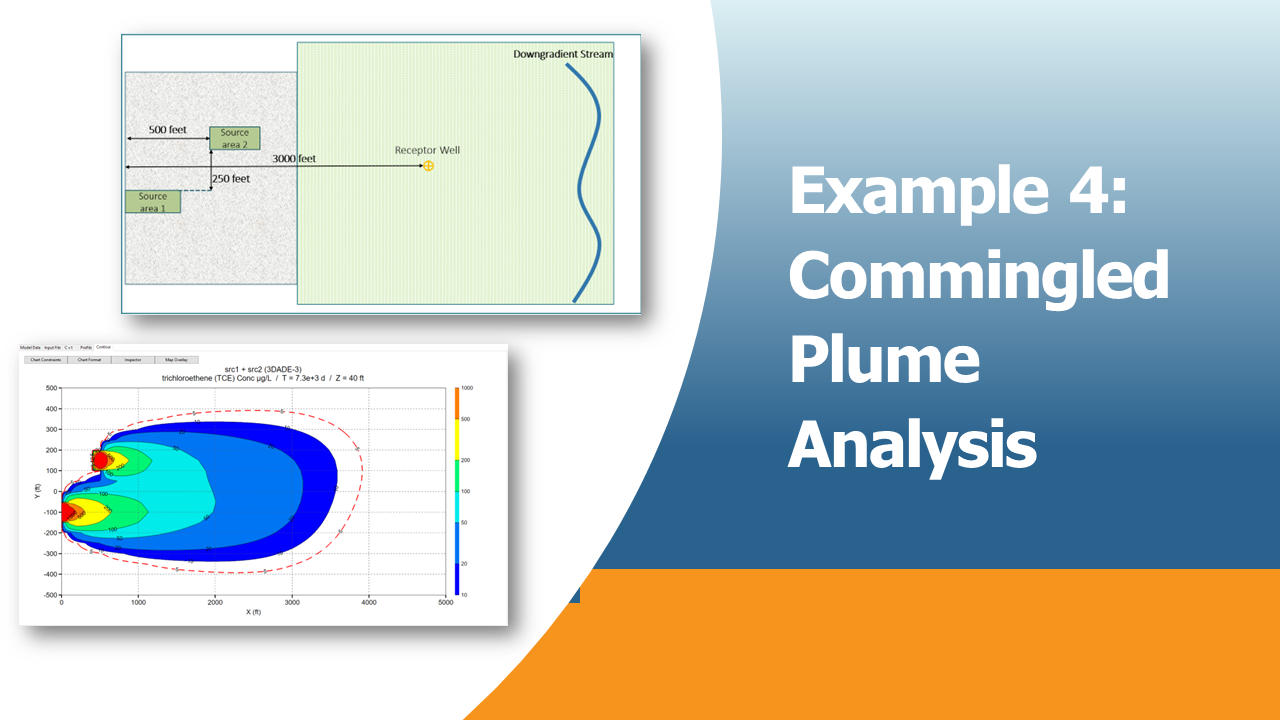
Example Application #5: Plume Volume, Area, Mass, Mass Flux Calculations
This multi-part example application dives further into TS-CHEM quantitative plume analysis features. Once the basic release and plume growth scenario has been simulated, a set of tools is available in TS-CHEM to explore and quantitate plume features such as plume volume and area, dissolved and sorbed contaminant mass, and contaminant mass flux through a plume transect, and other factors. The examples demonstrate several of the wide range of practical analyses to which these tools can be applied.
